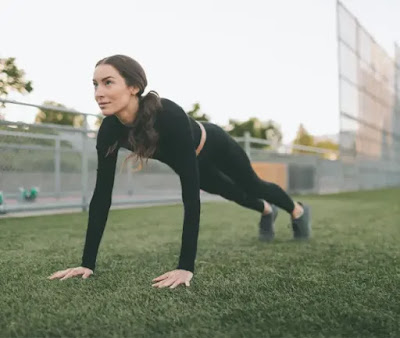Push-ups are a great exercise for overall fitness and can play a role in weight loss. They work multiple muscle groups, including the chest, triceps, shoulders, and core, providing a full-body workout. When performed regularly, push-ups can help increase your lean muscle mass, which can boost your metabolism and promote weight loss.
In addition, push-ups can be a cardiovascular workout that elevates your heart rate and burns calories, leading to a reduction in body fat. However, it's important to keep in mind that weight loss is the result of a combination of factors, including diet, exercise, and lifestyle habits. To maximize the impact of push-ups on weight loss, it's best to perform them as part of a comprehensive workout program that includes both strength and cardiovascular exercises.

Comments
Post a Comment